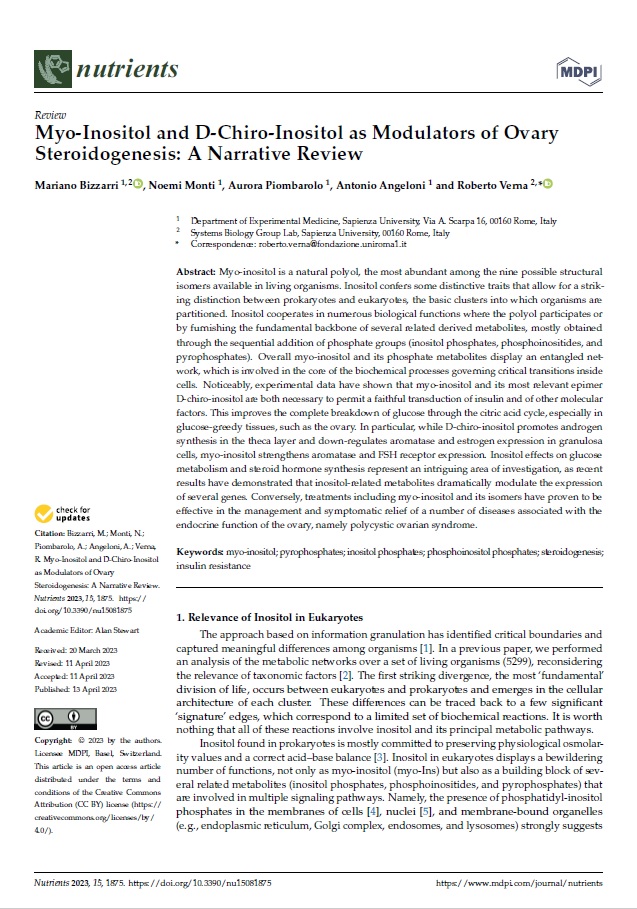Authors:
Mariano Bizzarri, Noemi Monti, Aurora Piombarolo, Antonio Angeloni, Roberto Verna
Myo-inositol is a natural polyol, the most abundant among the nine possible structural isomers available in living organisms. Inositol confers some distinctive traits that allow for a striking distinction between prokaryotes and eukaryotes, the basic clusters into which organisms are partitioned. Inositol cooperates in numerous biological functions where the polyol participates or by furnishing the fundamental backbone of several related derived metabolites, mostly obtained through the sequential addition of phosphate groups (inositol phosphates, phosphoinositides, and pyrophosphates). Overall myo-inositol and its phosphate metabolites display an entangled network, which is involved in the core of the biochemical processes governing critical transitions inside cells. Noticeably, experimental data have shown that myo-inositol and its most relevant epimer D-chiro-inositol are both necessary to permit a faithful transduction of insulin and of other molecular factors. This improves the complete breakdown of glucose through the citric acid cycle, especially in glucose-greedy tissues, such as the ovary. In particular, while D-chiro-inositol promotes androgen synthesis in the theca layer and down-regulates aromatase and estrogen expression in granulosa cells, myo-inositol strengthens aromatase and FSH receptor expression. Inositol effects on glucose metabolism and steroid hormone synthesis represent an intriguing area of investigation, as recent results have demonstrated that inositol-related metabolites dramatically modulate the expression of several genes. Conversely, treatments including myo-inositol and its isomers have proven to be effective in the management and symptomatic relief of a number of diseases associated with the endocrine function of the ovary, namely polycystic ovarian syndrome.

